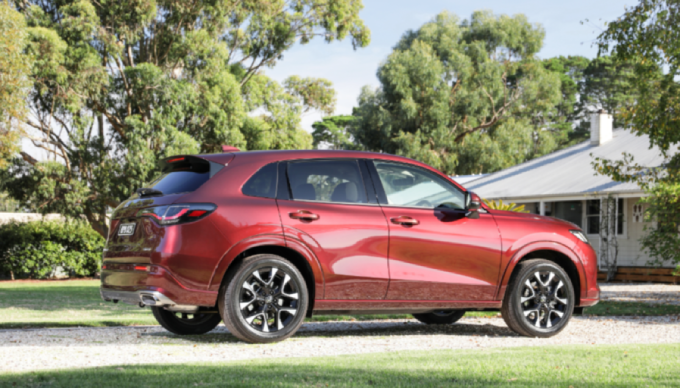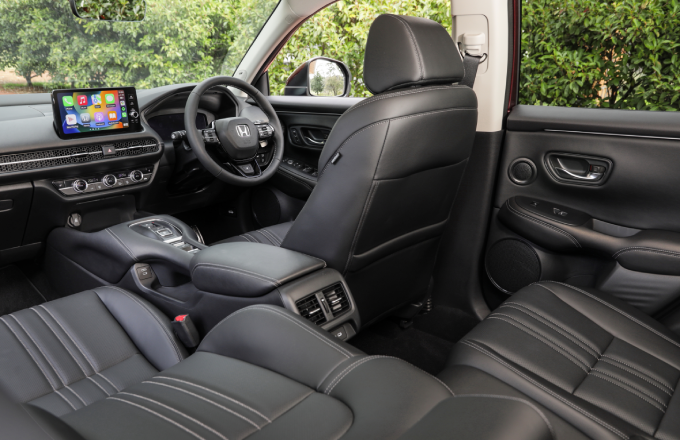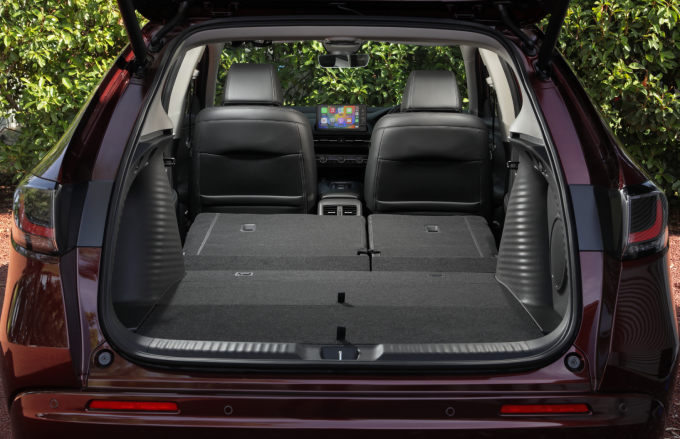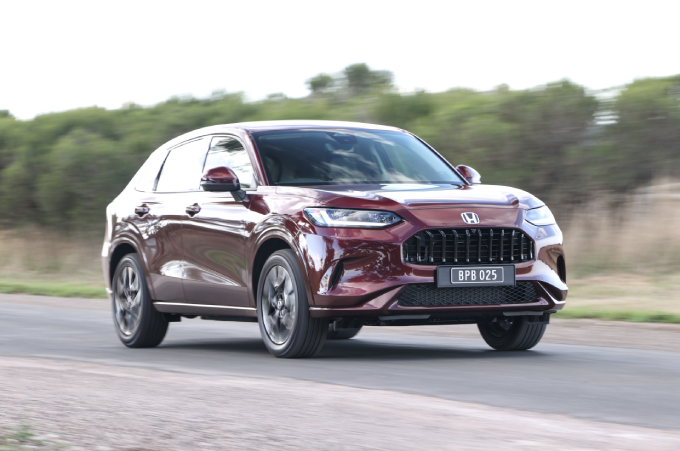
Much like Toyota with the introduction of the Corolla Cross, Honda’s first entry in to the medium-sized SUV market with the ZR-V Turbo and ZR-V Sport e:HEV models finds it in a very competitive and growing market segment.
Competitors include the third generation Nissan Qashqai which now has Nissan’s e-Power brand of petrol/electric propulsion system, and the Hyundai Tucson with both hybrid and plug-in hybrid powertrains as does the Kia Niro.
The ZR-V shares the same platform as the Honda Civic which means in spite of its taller stance and longer suspension set-up, delivers very similar driving characteristics and a similar in-cabin experience, notably the unique dashboard design and comfortable seats.
It’s 4.67 metres long and 1.67 metres tall, with seating for five people. In the boot, there’s 370 litres of luggage space to the window line with the rear seats in situ, and 1300 with the rear seats folded.
The ZR-V also heralds a new family line-up of Honda SUVs and will sit between the all-new medium-large CR-V which arrives later this year and the all-new HR-V light SUV which is due in 2024.
THE TECH
The ZR-V Sport e:HEV is powered by an updated two-motor hybrid system matched with a 2.0-litre direct injection engine.
In a similar set-up to Nissan’s e-Power system, the e:HEV sees the Honda 2.0-litre direct injection engine acting solely as a generator sending electric energy to a small traction battery which in turn powers an electric motor that drives the front wheels through a CVT automatic transmission.
The e:HEV system in the ZR-V Sport provides 135kW of power and 315Nm of torque which gives more than enough off-the-line response for a mid-sized family and fleet focused SUV.

Though the propulsion system might sound a bit complicated, the ZR-V Sport provides an EV-like driving experience without the need to plug in. And it will mean fewer trips to the petrol pump thanks to its combined fuel economy of 5.5 litres/100km.
A tank of fuel should last more than 900km for the average driver using the car in a mixture of urban and open road running.
THE SPEC
Unsurprisingly, as the ZR-V range flagshi in New Zealand the e:HEV Sport is comprehensively equipped and lacks for very little.
Standard equipment includes black leather upholstery, powered and heated front seats with driver memory, heated rear seats, 18-inch two-tone alloy whee-s, 12 speaker Bose audio, body-coloured lower bumpers and wheelarches, drive mode select, wireless charger, sports pedals, blindspot information system, rear cross traffic alert, auto-tilt mirror in reverse gear, sat nav, 360-degree multiview camera, heated steering wheel, door line illumination, and an air purification system.
The Sport is differentiated further by a shift-by-wire gear selector, smart key card, tyre repair kit (no spare wheel), humidity sensor, blue-outlined Honda badges and an e:HEV badge on the delayed automatic soft-close tailgate.
As you’d expect from Honda, the fit and finish and the execution of the interior is flawless.
The dashboard design with its honeycomb textured air vents and HVAC controls mirrors the Civic’s which means it’s simple and intuitive to operate and the centrally mounted touchscreen has Apple CarPlay and Android Auto capability. On the safety front the ZR-V Sport has a full suite of Honda Sensing active and passive safety features which among other things detects and acts to avoid collisions and pedestrians and recognise important traffic signs.
THE DESIGN
Much like the new Honda Jazz which is a smoother and sleeker reinterpretation of the previous model, the Honda ZR-V continues the sleek aerodynamic design theme but without losing Honda’s unique athletic identity.
The ZR-V features an elongated swage line which continues from the bonnet to over the swell of the rear fenders.

The low cowl provides greater visibility along with the outside mirrors, which are mounted on the doors positioned away from the A-Pillars.
Up front there’s a black vertical grille with large intake that routes air through the bumper and around the front wheels, improving aerodynamic efficiency.
The adaptive LED headlights with active cornering lights accentuate the sporty design.
For a cleaner more contemporary look, laser-brazing technology eliminates the need for roof mouldings and the windscreen wipers hide from view under the bonnet line when not in use.
In the rear, the sculpted hatch and tailgate spoiler highlight the car’s athletic proportions, and the outer edge of the taillights have been shaped to improve aerodynamics.
THE DRIVE
The ZR-V Sport is one of the most engaging vehicles in the class thanks to its combination of smooth linear power from the e:HEV powerplant.
A taut suspension package provides Civic-like steering and handling through tight corners and in a straight line without sacrificing ride comfort.
Though the steering feels quite light in the default mode, switching to sport mode brings some much-needed heft to the wheel.

That means you can place the ZR-V very accurately on a winding road with the lane keeping assist maintaining a watchful eye in the background without becoming horrifically intrusive.
The brakes at first seem a bit soft as regenerative hybrid systems often do but push the pedal a bit harder to engage the friction brakes and the ZR-V will pull up firmly and quickly.
When cruising along the motorway the e:HEV powerplant is whisper quiet and very little road and wind noise permeates into the cabin thanks to Honda’s judicious use of sound deadening material.
THE VERDICT
For a first attempt at the mid-size SUV market, Honda has ticked off most of the boxes with the ZR-V Sport e:HEV, except for the smallish boot capacity and 750kg towing capacity.
But it’s a commendable effort and offers class leading dynamics and fuel efficiency. For fleets considering a hybrid SUV such as the Nissan Qashqai, Hyundai Tucson, Toyota Corolla Cross, and Kia Niro, the ZR-V Sport is worthy of consideration when seeking an RFP from a leasing provider.








